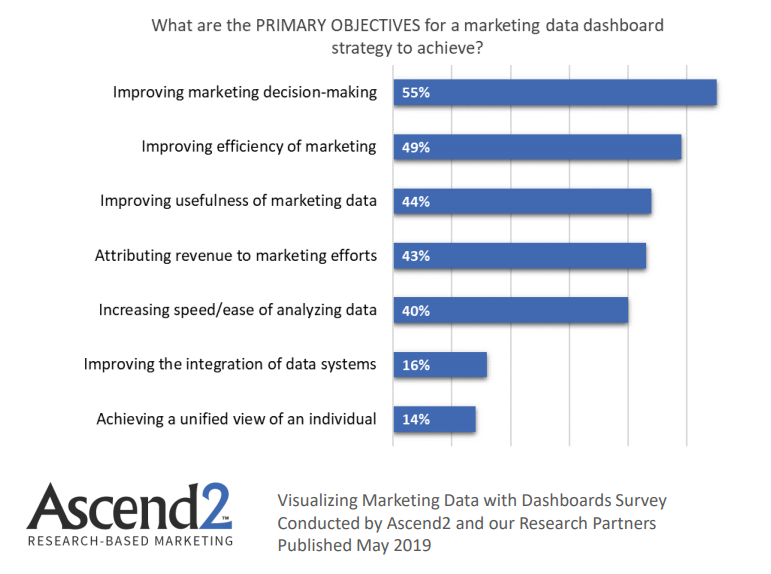The Primary Objectives for a Marketing Data Dashboard Strategy to Achieve, 2019
Digital Marketing | USA
Digital marketing campaigns generate a lot of data, from high-level revenue reporting down to program and channel-specific metrics. This data is a prerequisite for measuring ROI and campaign effectiveness, but that doesn’t mean it’s easy to understand. Marketing dashboards should reflect businesses priorities and role in the department. Many platforms allow users to customize dashboards by dragging and dropping widgets onto the interface. Marketing dashboards pull data from multiple sources in real time and display it in a single location. They provide an at-a-glance summary of how campaigns are performing, giving both marketing specialists and C-level executives a single source of truth, and the ability to drill down for deeper investigation. Marketing dashboards typically place most of their emphasis on reporting. They use dynamic visual aids (charts, graphs, heat maps, scatter plots, timelines, etc.) and plain text to illustrate a variety of key performance indicators (KPIs) and other data points.
Take a glance at the most important objectives for marketing data dashboard strategy to achieve, 2019:
- Improving marketing decision-making is ranked as the most important objective by surveyed marketers to be achieved for a marketing data dashboard strategy with a rate of 55%.
- Improving the efficiency of marketing is ranked as the second most important objective to be achieved by implementing marketing data dashboard with a rate of 49%.
- Improving the usefulness of marketing data also listed as an important objective for a marketing data dashboard strategy to achieve with a rate of 44%.
- Attributing revenue to marketing efforts is next as an objective for marketing data dashboard strategy to achieve with a rate of 43%.
- Increasing speed/ease of analyzing data also ranked as a primary objective to be achieved by implementing a marketing data dashboard with a rate of 40%.

A Graph Shows The Primary Objectives For a Marketing Data Dashboard Strategy to Achieve, 2019.







